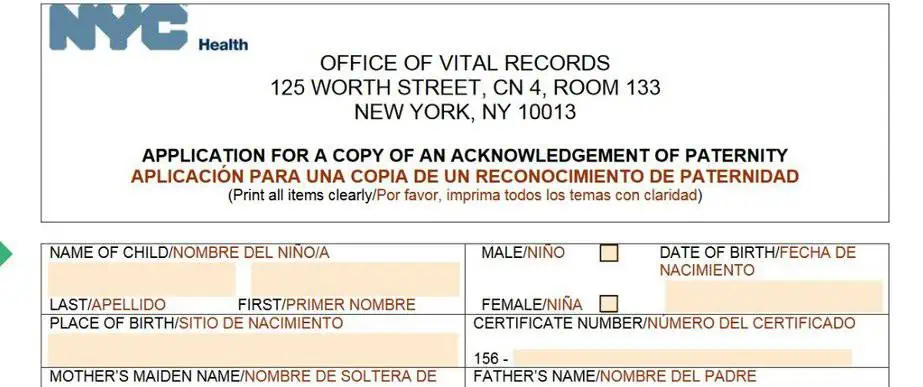Paternity Acknowledgment Form New York

What does paternity acknowledgment mean?
Paternity acknowledgment refers to an unmarried man who believes he is the biological father of a child.
Voluntary Acknowledgment of Paternity Form
An Acknowledgment of paternity (AOP) form is a document that an alleged father and the mother can complete and sign when a man believes he is the biological father of the child. Please note, an AOP form has been signed by both parents in New York State. The parents give up their right to a court hearing to determine parentage.
Why is it important to acknowledge paternity?
The importance of signing an Acknowledgement of Parentage form is as follows:
- It establishes custody and visitation rights for the child.
2. It allows the child the right to inherit from both the mother and father if AOP is filed in the same office where the birth certificate was filed.
- In addition, filing an AOP with a putative father registry will also allow a child to receive an inheritance.
- The child will know where he or she comes from which may help the child in the future if and health/medical issues occur.
- In the event, the biological father passes away the child will be able to receive benefits in the father’s name is on the child’s birth certificate.
What happens if both parents do not sign a voluntary AOP?
If only one parent signs the AOP. The other parent, normally this is the alleged father will not be legally responsible to support the child. Once a hearing is set to establish the paternity of the child. The alleged father will not have any legal duty to support a child.
Where can I get an Acknowledgment of Parentage form?
A voluntary acknowledgment of paternity form can be completed at a hospital or Social Services office in your district.

Can A father establish paternity if the child is over 18 in NY?
Yes. A father can establish the paternity of a child up to the age of 21. The AOP form can be used to begin the process.
Paternity Petition
What is a paternity petition?
A paternity petition is a document that can be filed in Family Court in the county in which you or the respondent resides.
